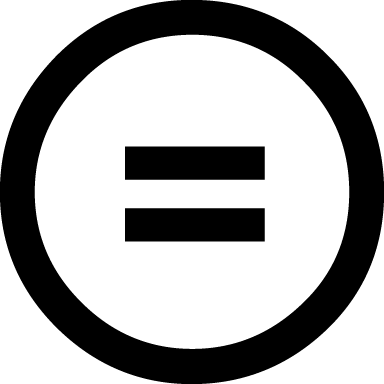On this page:
- Overview of Creative Commons licenses
- Depositing an article for the UC open access policies
- Publishing an article open access with a publisher
- Sharing preprints
Creative Commons (CC) licenses are a way for creators to encourage broad dissemination of their work by indicating to readers that the work can be reused and by specifying the conditions for that reuse. In the 20 years since CC licenses were first released, they have been used to license over 2 billion copyrighted works. Popular websites and services using CC licenses include Wikipedia, Flickr, Khan Academy, and OpenStreetMap. Open access scholarly publications also frequently use CC licenses.
CC licenses mix and match a few different elements that specify the terms under which works can be reused. None of the licenses restrict typical reuse of a work that would normally be allowed by law without a license, e.g. redistributing parts of a work that aren’t protected by copyright or engaging in fair use by translating a work for personal study. Below is a list of the elements that may be incorporated into a CC license:
 Attribution (BY). Anyone reusing the licensed work must give appropriate credit to the work’s author. The attribution should include the name of the author, a copyright notice, the CC license, and a link to the original work. Whoever reuses the work cannot give the impression that the author of the licensed work endorses the site, project, or new work where the licensed work is reused.
Attribution (BY). Anyone reusing the licensed work must give appropriate credit to the work’s author. The attribution should include the name of the author, a copyright notice, the CC license, and a link to the original work. Whoever reuses the work cannot give the impression that the author of the licensed work endorses the site, project, or new work where the licensed work is reused.  NonCommercial (NC). Anyone reusing the work cannot use it for commercial purposes, defined as “primarily intended for commercial advantage or monetary compensation.” The restriction is about the use, not the user: neither a non-profit organization nor for-profit company can sell copies of CC BY-NC licensed work; either can give them away for free.
NonCommercial (NC). Anyone reusing the work cannot use it for commercial purposes, defined as “primarily intended for commercial advantage or monetary compensation.” The restriction is about the use, not the user: neither a non-profit organization nor for-profit company can sell copies of CC BY-NC licensed work; either can give them away for free. NoDerivatives (ND). Anyone can copy or share the original work, but not any derivative works they create. The most common type of derivative work for scholarly publications is a translation. Reformatting a work (for example, reproducing the text of an article as HTML rather than a PDF) is not a derivative work, because it does not change the creative expression contained in the article, which is what is protected by copyright law.
NoDerivatives (ND). Anyone can copy or share the original work, but not any derivative works they create. The most common type of derivative work for scholarly publications is a translation. Reformatting a work (for example, reproducing the text of an article as HTML rather than a PDF) is not a derivative work, because it does not change the creative expression contained in the article, which is what is protected by copyright law. ShareAlike (SA). If someone makes a derivative work based on the original work, they must share it using the exact same license.
ShareAlike (SA). If someone makes a derivative work based on the original work, they must share it using the exact same license.
Since all the licenses require attribution, and the ND and SA options are mutually exclusive, combining these elements can only result in six different possible CC licenses.
- CC BY. Either the original work or a derivative work can be shared, with appropriate attribution, for commercial or noncommercial purposes. This the most open of the six licenses, permitting the broadest sharing and reuse.
- CC BY-NC. Either the original work or a derivative work can be shared with appropriate attribution, but only for noncommercial purposes.
- CC BY-ND. The original work can be shared with appropriate attribution, for commercial or non-commercial purposes. If someone creates a derivative work, like a translation, the license does not permit them to share that derivative work.
- CC BY-NC-ND. The original work can be shared with appropriate attribution, but only for noncommercial purposes. No derivative works can be shared.
- CC BY-SA. The original work or derivative works can be shared, with appropriate attribution, for commercial or noncommercial purposes. Any derivative works must also use a CC BY-SA license.
- CC BY-NC-SA. The original work or derivative works can be shared with appropriate attribution, but only for noncommercial purposes. Any derivative works must also use a CC BY-NC-SA license.
CC licenses cannot be revoked. Authors can re-share their work with a different license, but anyone who downloaded the work with the previous license can still use it under the terms of that earlier license. If a user wants to use a work in a way that goes beyond what the CC license allows or what the law otherwise allows (e.g. fair use), they must contact the copyright holder for separate permission.
Note: CC0 is a Creative Commons tool that designates Public Domain Dedication, or “no rights reserved.” Rather than a license, CC0 is a complete waiver of the author’s copyright ownership and any related rights, including the right to require attribution. As with the licenses, this dedication to the public domain cannot be revoked. The use of CC0 is often recommended for data sharing because it reduces barriers to data reuse that might be caused by the attribution requirement of a license like CC BY. You can read more about this in our blog post, CC BY and data: Not always a good fit.
Depositing an Article for the UC Open Access Policies
When authors participate in the UC OA policies by uploading their articles to eScholarship (UC’s institutional repository and publishing platform), they are asked to choose a CC license. Authors can choose any of the six CC licenses above, or they can choose not to apply a license. If authors opt out of a CC license, the default rules of copyright law control how an article can be used. In the United States, that means the full text of the article usually cannot be shared on another website, nor can translations of the article, but some uses are allowed under exceptions like fair use.
The UC Academic Senate strongly encourages choosing a Creative Commons Attribution (CC BY) license when depositing a scholarly article, to encourage maximum dissemination and use of UC scholarship. Articles shared with a CC BY license can be:
- Shared on course, conference, lab, news, and other websites;
- Reproduced in print coursepacks, even when they are sold by commercial copy shops;
- Translated into other languages, and shared by their translators;
- Excerpted and combined with publications that use a different CC license (without implying the original author’s endorsement of the new work).
Publishing an Article Open Access With a Publisher
Articles that are published open access on a journal’s website are often published under a Creative Commons license. For journals that are fully open access, the publisher typically chooses a license that applies to all the articles in the journal. In PLOS journals, for example, all articles are published under a CC BY license. In other journals, particularly journals where only some articles are available open access, an author may be able to choose the license. The license choices that are available vary depending on the publisher, but CC BY is usually one of the options.
When an author can choose which license the publisher uses to publish their article, the UC Academic Senate recommends choosing a Creative Commons Attribution (CC BY) license, which encourages maximum sharing and reuse. Articles published with a CC BY license can be:
- Shared on course, conference, lab, news, and other websites;
- Reproduced in print coursepacks, even when they are sold by commercial copy shops;
- Translated into other languages, and shared by their translators;
- Excerpted and combined with publications that use a different CC license (without implying the original author’s endorsement of the new work).
UC authors retain broad rights to reuse the full text of their articles through UC’s open access policies. Authors at other institutions, however, may be granting exclusive rights to control commercial or other use of their articles to their publishers if they choose a license more restrictive like CC BY-NC. To learn more about how this works for authors at institutions that do not have an institutional OA policy, you can read the blog post “Exclusive licence to publish – now here’s a thing” at the Coalition S website.
Sharing Preprints
Preprints are journal articles that have not yet gone through peer review. Authors commonly share their preprints on preprint servers designed for this purpose, most of which are discipline-specific. arXiv, bioRxiv, EarthArXiv, and EcoEvoRxiv are all examples of preprint servers, and there are many more. Authors share their preprints for a variety of reasons, including to speed up dissemination of their work and to get early feedback prior to publication.
Authors sharing their preprints can often choose among a variety of CC licenses, or can choose not to apply a CC license at all. Authors should understand the policies of the journals they are likely to publish with and the policies of their research funders before depositing a preprint.
Many funders do not explicitly address preprints, but some do. For example, the Gates Foundation and the NIH encourage (but do not require) sharing preprints with a CC BY license.
Publisher policies also vary. Springer Nature encourages authors to share their preprints, and adds that authors may choose “any license of their choice for the preprint including Creative Commons licenses.” The preprint policies of Elsevier, Taylor & Francis, and Wiley allow sharing, and are silent about CC licenses. SAGE, on the other hand, notes that while they do not have a policy against preprint sharing generally, “some journals do not allow submissions from papers that are already available on a preprint server,” and advises authors to check the policies of individual journals. Preprint sharing policies can typically be found on journal websites, and are collected in Sherpa Romeo as well.
Assuming there are no conflicts with relevant funder or publisher policies, an author may choose to share their preprint under a Creative Commons Attribution (CC BY) license to encourage maximum dissemination and reuse. Articles shared with a CC BY license can be:
- Shared on course, conference, lab, news, and other websites;
- Reproduced in print coursepacks, even when they are sold by commercial copy shops;
- Translated into other languages, and shared by their translators;
- Excerpted and combined with publications that use a different CC license (without implying the original author’s endorsement of the new work).
If an author chooses to share their preprint without a CC license, or with a more restrictive license like CC BY-NC-ND, they will have later opportunities to share their work more openly. For example, as described above:
- Authors may publish the final version of the article open access with their publisher under a CC BY license; or
- If the author is a University of California employee, they can participate in UC’s open access policies by sharing the accepted manuscript version of their article with the license of their choice in eScholarship after peer review.



